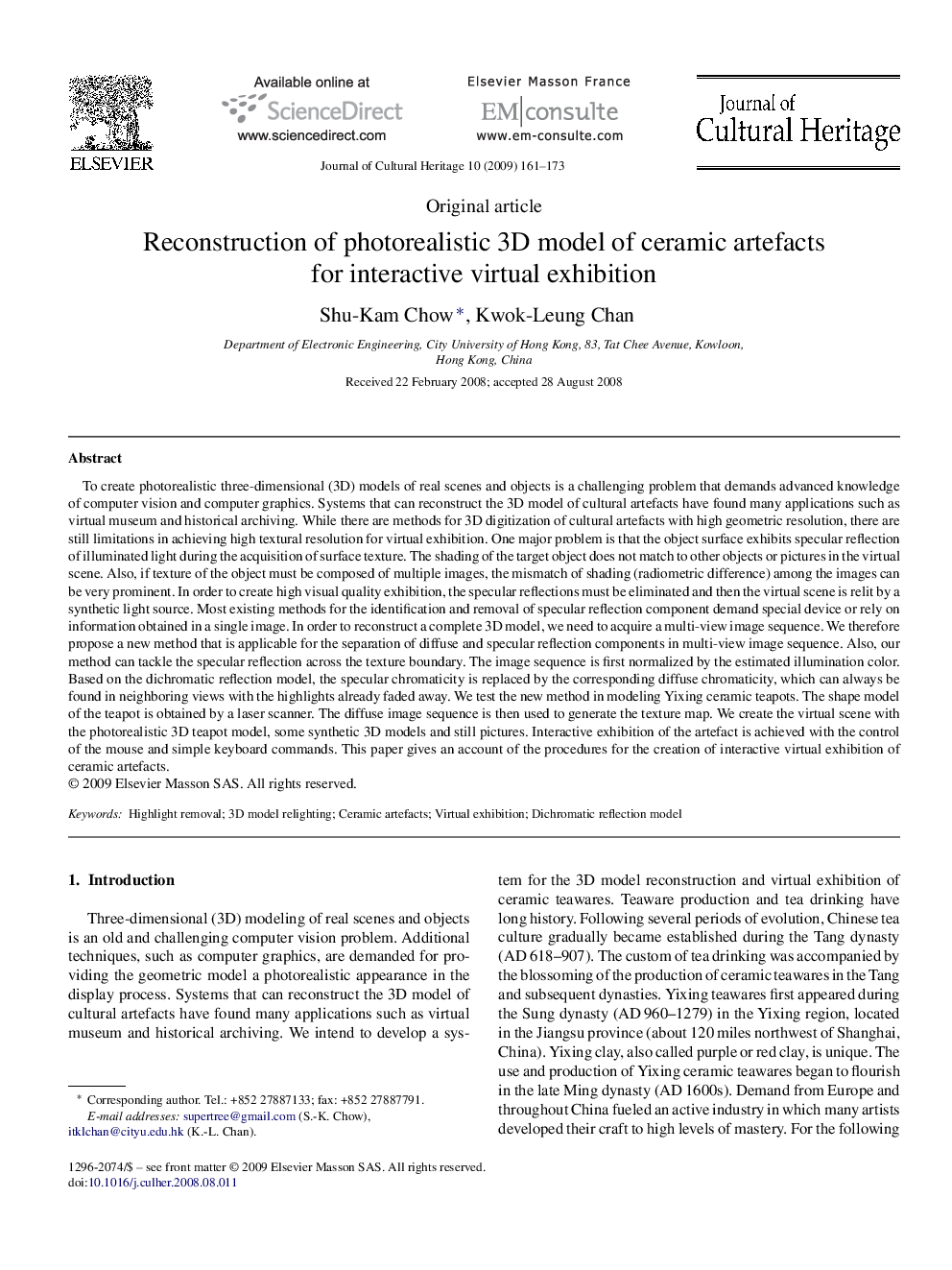| Article ID | Journal | Published Year | Pages | File Type |
|---|---|---|---|---|
| 1038631 | Journal of Cultural Heritage | 2009 | 13 Pages |
To create photorealistic three-dimensional (3D) models of real scenes and objects is a challenging problem that demands advanced knowledge of computer vision and computer graphics. Systems that can reconstruct the 3D model of cultural artefacts have found many applications such as virtual museum and historical archiving. While there are methods for 3D digitization of cultural artefacts with high geometric resolution, there are still limitations in achieving high textural resolution for virtual exhibition. One major problem is that the object surface exhibits specular reflection of illuminated light during the acquisition of surface texture. The shading of the target object does not match to other objects or pictures in the virtual scene. Also, if texture of the object must be composed of multiple images, the mismatch of shading (radiometric difference) among the images can be very prominent. In order to create high visual quality exhibition, the specular reflections must be eliminated and then the virtual scene is relit by a synthetic light source. Most existing methods for the identification and removal of specular reflection component demand special device or rely on information obtained in a single image. In order to reconstruct a complete 3D model, we need to acquire a multi-view image sequence. We therefore propose a new method that is applicable for the separation of diffuse and specular reflection components in multi-view image sequence. Also, our method can tackle the specular reflection across the texture boundary. The image sequence is first normalized by the estimated illumination color. Based on the dichromatic reflection model, the specular chromaticity is replaced by the corresponding diffuse chromaticity, which can always be found in neighboring views with the highlights already faded away. We test the new method in modeling Yixing ceramic teapots. The shape model of the teapot is obtained by a laser scanner. The diffuse image sequence is then used to generate the texture map. We create the virtual scene with the photorealistic 3D teapot model, some synthetic 3D models and still pictures. Interactive exhibition of the artefact is achieved with the control of the mouse and simple keyboard commands. This paper gives an account of the procedures for the creation of interactive virtual exhibition of ceramic artefacts.
